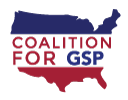Today is yet another big day in the 2016 presidential primaries as voters head to the polls in Connecticut, Delaware, Maryland, Pennsylvania, and Rhode Island. With all of the anti-trade rhetoric in the campaign, it is important to recognize how these states benefit from trade, and the Generalized System of Preferences (GSP) program in particular.
In 2015, companies in the five states saved about $55 million in import tariffs (i.e., taxes) because of the GSP program. Companies in Maryland saved about $24 million, the highest among the five states, as shown in the graphic below. Average tariffs waived because of GSP ranged from 2.6 percent in Delaware to 6.8 percent in Rhode Island – the highest in the country.

More than 60 companies in those states, including about 50 small businesses, are among the 700+ companies and associations on the GSP supporter list. There are multiple supporter list companies in each state, including about 2 dozen in Pennsylvania.
These companies were hit hard when Congress last allowed GSP to expire. For example, COLE-TUVE in White Marsh, Maryland paid about $75,000 in extra taxes and lost an estimated $250,000 in sales because higher prices forced it to reduce inventories. This had a direct impact on its employees, as retirement contributions and raises were frozen during the expiration.
McGuire Manufacturing, a 20-person manufacturer in Cheshire, Connecticut, was unable to hire new workers during the expiration. According to President Mike McRoberts: “As a result of GSP expiration, we have allowed attrition to reduce our workforce by two full-time positions. I’d like to replace them, and would do so immediately if Congress renews GSP, but I can’t right now.”
Similarly, a chemical company in Pennsylvania (that requested anonymity) estimated at least $250,000 in lost sales because of price increases associated with GSP expiration. As a result, it put off hiring two additional staff.
For all the tough talk about trade from presidential candidates, the experiences of these companies (and many others) show the the negative impact on American companies and workers caused by higher U.S. trade barriers.
